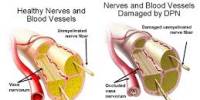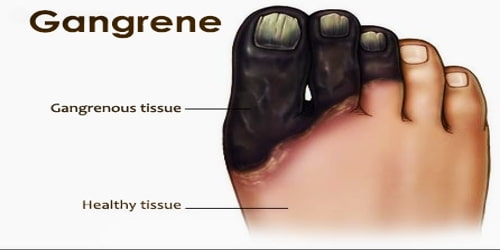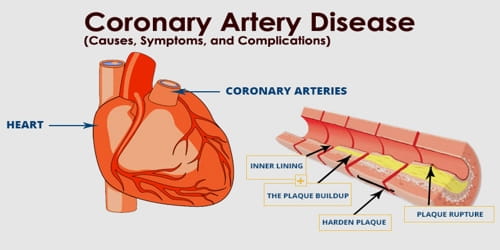A hospital that is integrated with a medical school and acts as the primary location for the instruction of medical students and trainees is known as an academic medical center (AMC), sometimes known as a teaching hospital. AMCs play a critical role in advancing medical knowledge and improving patient outcomes through their research programs and clinical trials.
Numerous studies show that AMCs generally have superior patient outcomes than community or non-teaching hospitals. However, it is unknown how the existence of AMCs may impact the community hospitals that are nearby.
A new study led by researcher-clinicians at Beth Israel Deaconess Medical Center (BIDMC) suggests that the presence of academic medical centers within a health care market is linked to better outcomes for patients treated at nearby community hospitals.
Findings published in JAMA Network Open show that receiving care at a non-AMC hospital in a market with AMC presence was associated with lower mortality and a greater number of healthy days at home. These correlations were strongest in areas where there were the most AMCs, suggesting that AMCs might improve patient outcomes for those receiving care at nearby non-teaching hospitals.
“To our knowledge, this is the first study to systematically examine the potential indirect clinical benefits of receiving health care at a non-teaching hospital with greater proximity to one or more AMCs across a wide range of conditions,” said lead author Laura G. Burke, MD, MPH, an emergency medicine physician at BIDMC. “Identifying strategies by which AMCs may enhance care for patients in the entire region has the potential to improve health outcomes for underserved populations.”
In their retrospective cohort study of older Medicare beneficiaries who received care from U.S. acute care hospitals from 2015 to 2017, Burke and colleagues looked at more than 22 million total hospitalizations.
This study extends prior work examining the role of AMCs in driving acute care outcomes. The findings are consistent with other studies demonstrating geographic disparities in healthcare access, and highlights the degree to which rural regions have less access to AMC services. The presence of AMCs may enhance care for patients in rural and remote locations and further research may identify strategies that have the potential to improve health outcomes for underserved populations and widen the reach of the nation’s academic healthcare institutions.
Laura G. Burke
Nearly 19 million of these, or nearly 84%, were at non-teaching hospitals. After an inpatient stay, they calculated mortality within 30 and 90 days. The number of days a patient spent at home during the follow-up period that they were healthy, as opposed to being hospitalized, receiving care at an outpatient emergency room, or passing away, were also calculated.
Next, the team created four health care market categories. Zero patients who were admitted to a hospital in a market with no AMCs were also admitted to an AMC. Up to 20% of patients admitted to the hospital in a region with few AMCs visited one. In moderate AMC regions, AMCs managed 20%–35% of cases; and in high AMC markets, more than 35% of hospitalized patients were admitted to AMCs.
Burke and colleagues observed stark differences in the demographic makeup of the total populations living in the four markets, with the absence of an AMC presence being associated with the lowest median income, lowest mean population, highest mean poverty rate, and highest proportion of white residents.
The researchers found a strong correlation between decreased mortality for treatment in markets with high and low AMC presence compared to markets with no AMC presence, even before adjusting for the detrimental effects that poverty and other regional factors can have on health.
The relationship was reinforced, though, when Burke and colleagues modified their model to account for patient features and demographic factors. When receiving care in markets with a higher AMC presence, patients who were hospitalized at non-AMCs had lower 30- and 90-day mortality and more healthier days at home at 30 and 90 days.
By contrast the team found no relationship between market-level AMC presence and outcomes for patients treated at the AMC themselves; that is, the presence of more AMCs in a given market did not impact outcomes for patients of AMCs.
“Taken together these results suggest a spillover effect of AMC’s on outcomes for neighboring community hospitals and that the benefits of AMC for the broader community may be greater than is traditionally recognized,” said Burke, who is also an instructor in the department of Health Policy and Management at Harvard T. H. Chan School of Public Health.
Burke and colleagues hypothesize that AMCs might benefit nearby community hospitals in a number of different ways. Given that doctors typically work close to where they received their training, the presence of an AMC might result in a larger pool of doctors. Indeed, Burke and colleagues’ analysis revealed that markets with the greatest AMC presence have more nurses and physicians per capita.
Similarly, formal and informal affiliations between AMCs and non-AMCs within the same market may encourage diffusion of knowledge, innovation as well as sharing of best practices and even clinicians who work at multiple sites.
Most clearly, should their diseases necessitate tertiary care, patients admitted to community hospitals in areas with greater AMC availability may be more likely to be moved to a teaching hospital.
“This study extends prior work examining the role of AMCs in driving acute care outcomes,” said Burke, who is also an assistant professor of emergency medicine at Harvard Medical School. “The findings are consistent with other studies demonstrating geographic disparities in healthcare access, and highlights the degree to which rural regions have less access to AMC services. The presence of AMCs may enhance care for patients in rural and remote locations and further research may identify strategies that have the potential to improve health outcomes for underserved populations and widen the reach of the nation’s academic healthcare institutions.”
Overall, AMCs are important institutions that play a key role in advancing medical knowledge, improving patient outcomes, and training the next generation of health care professionals.
Co-authors included Ryan C. Burke, Ph.D., MPH of BIDMC; E. John Orav, Ph.D., of Brigham and Women’s Hospital; Jose Figueroa, MD, MPH and Ciara E. Duggan of Harvard T.H. Chan School of Public Health; and Ashish K. Jha, MD, MPH of Brown University School of Public Health.
















